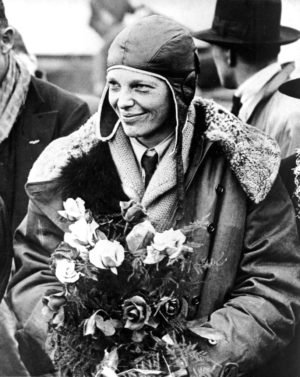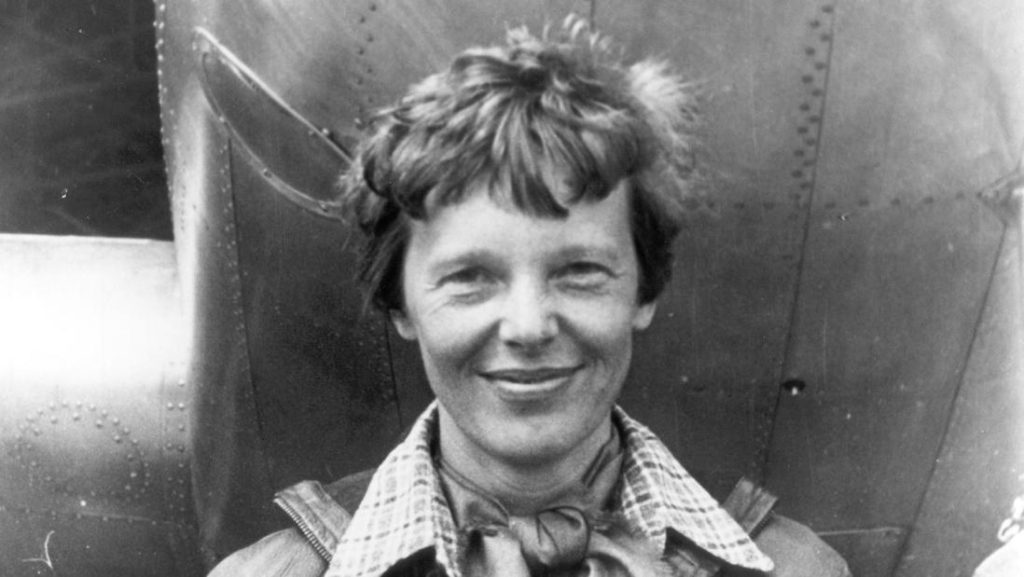A new analysis concluded that the bones found in 1940 on a western Pacific Ocean island were most likely the remains of Amelia Earhart, the American aviator and first woman to fly solo across the Atlantic Ocean. Earhart along with her navigator Fred Noonan disappeared on July 2, 1937, 42 days after they began their attempt to circumnavigate the world.

The study is the most recent in a string of researches on the remains, which were discovered on the Nikumaroro Island. Unfortunately, no further testing can be conducted on the remains to prove beyond all doubt that they belonged to Earhart, because the bones are now lost. D.W. Hoodless was a physician who was then working in a medical school in Fiji and was the first to examine the remains after they were found on the island by a British Colonial Officer named Gerald Gallagher. Hoodless discarded the bones because he determined that they were from a short, stocky man of European descent and not from Earhart.
All that survive are seven measurements, from the skull and bones of the arm and leg. It is through these measurements, among other evidence, that University of Tennessee anthropologist Richard Jantz reached his conclusion. A search party also discovered a “part of a shoe judged to have been a woman’s, a sextant box designed to hold a Brandis Navy Surveying Sextant, manufactured around 1918 and similar to the one Earhart’s co-pilot used, and a Benedictine bottle, something Earhart was known to carry” on the island.
Amelia Earhart’s story has captivated the public interest for decades, and she remains to be one of the most iconic people in history. Below are 10 facts about her that are worth re-visiting in light of this new study:

1. She was an intelligent student, but opted to drop out of school numerous times.
Earhart showed an aptitude for Science early on and was a graduate of the Hyde Park High School in Chicago. She had a hard time making friends there, and her yearbook caption described her as “the girl in brown who walks alone.”
After Hyde Park, she attended the Ogontz School outside of Philadelphia, where she excelled in academics and became the Vice President of her class. She did not graduate there, however, because she opted to volunteer at the Toronto’s Spadina Military Hospital during World War 1. She enrolled in the pre-med program at Columbia University in 1920, but dropped out after a year. She re-enrolled in 1925 but ended up leaving school again. Earhart also took summer classes at Harvard, but gave up on higher education for good after failing to secure an MIT scholarship.
2. She held different jobs before becoming an aviator.
During World War I, she became a nurse’s aid in Toronto, Canada and cared for wounded soldiers. Other early jobs included being a telephone operator, tutor, social worker, truck driver, photographer, and stenographer. She also worked as a mail clerk, a job she found tedious, in order to pay for her flying lessons.
3. It was at a flying exposition that she first felt herself becoming interested in planes.
The first time Earhart saw a plane, which was at the 1908 Iowa State Fair, she was unimpressed by “a thing of rusty wire and wood.” She recalled this experience in a diary entry that is included in the book “Last Flight“, which was published posthumously.
It was only around 1916 that Earhart felt an interest for aviation. She was then working as a nurse’s aid in Toronto, and she went to see a flying exposition with a friend. A stunt pilot dove near them during the show, probably expecting to make her scamper. But Amelia stood her ground and was unfazed.
“I did not understand it at the time, but I believe that little red airplane said something to me as it swished by,” she recalled.
4. She learned how to fly from another pioneering woman in aviation.
Amelia Earhart learned how to pilot aircrafts from Neta Snook (1896–1991), a pioneer aviator who achieved numerous records even before Earhart began her own conquest of the skies. Snook was the first woman aviator in Iowa, and the first woman accepted as a student at the Curtiss Flying School in Virginia. She was also the first woman to run her own aviation business as well as a commercial airfield.
Earhart’s first flying lesson with Snook took place on January 3, 1921. Six months later, she purchased her first aircraft— a yellow Kinner Airster biplane — for $2000 and nicknamed it “The Canary”.
5. Earhart was the first woman to get a pilot’s license from the National Aeronautic Association (NAA).
She received her pilot’s license from the NAA in 1923. During that time, pilots and aircrafts weren’t legally required yet to be licensed. Earhart was also the sixteenth woman to get licensed by the Fédération Aéronautique Internationale (FAI), which was required to set flight records.
6. She achieved many firsts in her career as pilot.
Earhart became the first female aviator to fly solo across the Atlantic Ocean on May 20-21, 1932. For this feat, she also became the first woman to be awarded the Distinguished Flying Cross from Congress, the Cross of Knight of the Legion of Honor from the French government, and the Gold Medal of the National Geographic Society from then U.S. President Herbert Hoover.
In the same year, she became the first woman to fly solo across the North American continent and back. In 1935, she became the first person to fly solo from Hawaii to California (January 11), from Los Angeles to Mexico City (April 19-20), and from Mexico City to New York (May 8).
7. Earhart helped established the first organization for women in aviation.
In 1929, Amelia helped found the The Ninety-Nines, Inc., the international organization of women pilots. The name of the organization came from the 99 licensed women pilots who established it. Earhart was its first president and held that position for two years, during which she used her celebrity status to promote the growth of American commercial airlines as well as encourage other women to pursue aviation.
Aside from helping organize women in aviation, Earhart was also involved in the National Women’s Party. She was an early supporter of the Equal Rights Amendment, and was part of the group that met with the President in the White House on September 22, 1932 to lobby for the amendment. She issued the following statement during the meeting with then President Hoover:
“I know from practical experience of the discriminations which confront women when they enter an occupation where men have priority in opportunity, advancement and protection… I join with the National Woman’s Party in hoping for the speedy passage of the Lucretia Mott Amendment, which would write into the highest law of our land that ‘men and women shall have equal rights throughout the United States and every place subject to its jurisdiction.”
8. She was a teacher, counselor, and prolific author.
In between flights, Earhart was a visiting faculty member at the Purdue University and worked as an advisor in aeronautical engineering and a career counselor to women students.
During her career, she wrote numerous essays for various publications about her experiences to promote aviation. She even became the aviation editor of Cosmopolitan from 1928 to 1930. She also published two books during her lifetime: “20 Hrs. 40 Min.“ is a journal of her experiences as the first woman passenger on a transatlantic flight in 1928, and “The Fun of It“ is a memoir about her flying experiences and an essay on women pilots.
9. She launched her own clothing line and made the samples herself.
Perhaps one of the most surprising things about Amelia is that despite her busy schedule as a writer, editor, counselor, organization leader, and — of course — as a pilot, she still had the time to put up her own clothing line called Amelia Earhart Fashions. The clothes were sold at Macy’s in New York and Marshall Fields’ in Chicago in order to help fund her various expeditions. The samples of the clothing line were created by Amelia herself, who learned how to sew as a young girl and who was used to making her own clothing to save what money she can before she found success. Later, she also used her knack for sewing and design in order to make herself a comfortable jumpsuit she can wear in the cockpit. She designed a flying suit with loose trousers, a zipper top and big pockets for the Ninety-Nines as well.
10. The search for Amelia was the most expensive search at the time.
After Earhart’s disappearance on July 2, 1937, the U.S. government immediately launched an extensive search and rescue attempt. The government spent $4 million and scoured 250,000 square miles of ocean before calling off the operation some weeks later, on July 19.
George Putnam, Amelia’s husband, financed his own search until October 1937 to no avail. On January 5, 1939, two years after his wife’s disappearance, Putnam asked a judge in a Los Angeles court to declare Earhart legally dead. He opted to waive the traditional seven-year waiting period so he could begin handling her estate.
Read more from InqPOP!:
10 writing tips to live by from Ernest Hemingway
15 books every feminist needs to read
Women stand up against sexual harassment through a very unlikely method
Dutch photographer captures Iranian women’s brave acts of defiance
5 Maya Angelou Poems You Need to Read Again



